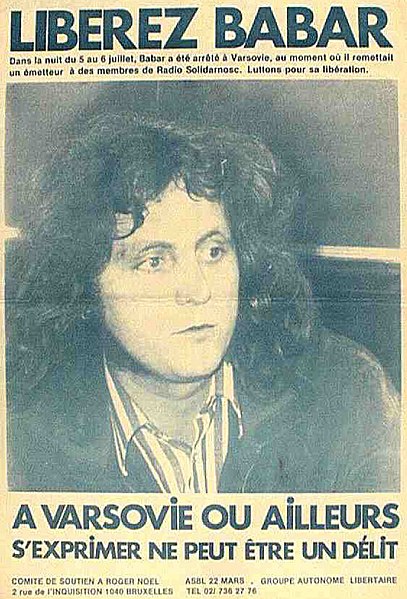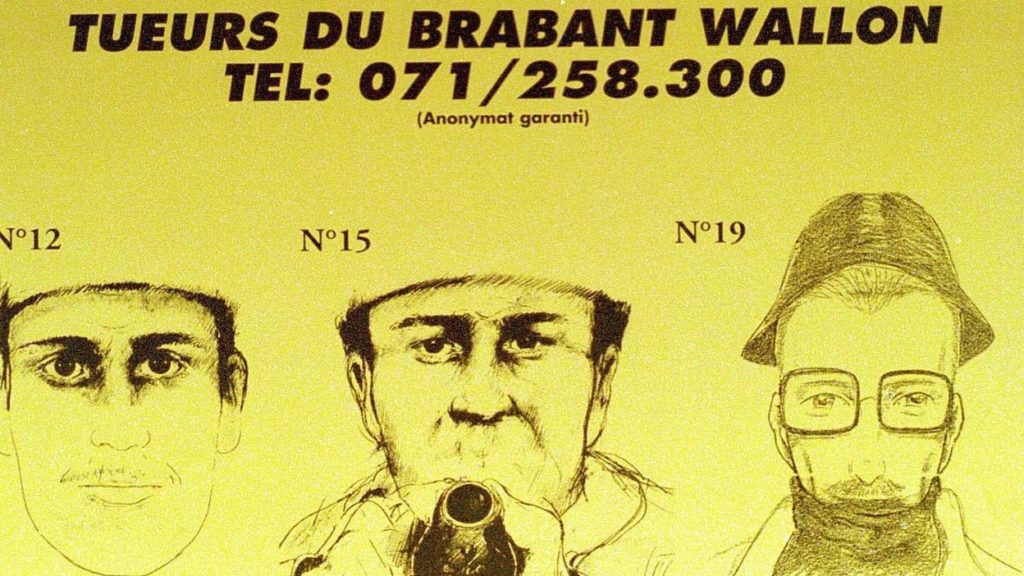A country in foment: Belgium in the 1980s
What was all that about?’ a recent newcomer to Belgium asked me. The ‘that’ in question was the 1992 black comedy mockumentary film, C’est arrivé près de chez vous (Man Bites Dog) – a major hit at Cannes and a cult film. Having visited and then lived in Belgium in the 1980s, I recalled to him the impression I had had of a country in ideological and socio-political foment, a country where anarchy, it seemed, was never far away. It was an anarchy into which, to my mind, Rémy Belvaux, André Bonzel and Benoît Poelvoorde, the makers of Man Bites Dog, had tapped, just as surely as Belgian surrealists such as Marcel Broodthaers and René Magritte and Belgian symbolists such as Ferdinand Khnopff and Félicien Rops had tapped in previous generations.
For this is the non-country of Noël Godin, the cream pie thrower (‘l’entarteur’), who counts Marguerite Duras, Maurice Béjart, Nicolas Sarkozy, Jean-Luc Godard, Bernard-Henri Levy and Bill Gates among his high-profile victims (and whose memoirs are entitled Cream and Punishment). This is the non-country of anarchist film maker Jan Bucquoy, who in 2009 opened the Underwear Museum (Le Musée du Slip, initially located in Brussels, but now in Lessines), declaring, with a mostly straight face, that the framed underwear represented a utopian longing for an equal society.
Perhaps my student status granted me entry to a particular world, but I found the Brussels and Belgium of the early 1980s to be a fascinating hotch-potch of ideologies and political leanings. These ranged from libertarian anarchists to anarcho-syndicalists, from Maoists to Trotskyists. Many of these encounters would come at beer and wine-fueled parties in residences sécondaires (second homes) in far-flung parts of the Belgian countryside, belying the bourgeois lifestyle that permitted them the luxury of their exotic politics – though it was considered bad form to point to the irony. These barbecue parties – do they still happen, I wonder? – were invariably along the lines of ‘bring your own brochette and beer’ and would peter out into small hour discussions about ‘serious matters’. I recall one young man whose parents had, he explained, long ago emigrated to (Francoist) Spain. Somebody later told me they had followed Degrelle before the war and ‘collaborated’ during it, and that their emigration was actually an exile. At the other extreme, I met fierce Greek communists, whose parents had fled the Colonels and didn’t yet feel they could return.

In similar parties in the mid-1980s I met several times ‘Babar’ (real name Roger Noël), a celebrity after his July 1982 arrest and imprisonment in Jaruzelski’s Poland, after trying to smuggle radios and other material to the underground trade union movement, Solidarnosc. Wiki describes him as a militant libertarian socialist, though in those days Babar was also close to the anarchist movement. Babar, who had a pleasant character and a great enthusiasm for music of the 1950s and 1960s, ran a printing press, the 22 March press. For a long time, his press was on the ground floor of a house in the rue de Pavie. On hot summer nights he would keep the door open and passers-by could see him and hear the clack-clack of the press. This took a certain courage; in July 1981 the headquarters of the radical left-wing journal, Pour, with which Babar had been associated, was burned down by presumed far right terrorists.

Indeed, there was not just a heady atmosphere in 1980s Belgium; there was a violent one. First, anti-Semitism reared its ugly head. On 28 July 1980 in Antwerp a Syrian-born terrorist launched a grenade attack on a group of forty Jewish children waiting with their parents for a bus to their summer camp. A fifteen year-old boy was killed. Twenty others were wounded. On 20 October 1981 the synagogue in Antwerp was bombed. And the Irish Troubles had soon made their way to Belgium. There were several IRA bomb and gun attacks in 1979, culminating in a 29 August bomb attack on British soldiers in the Grand Place, injuring fifteen. In November the same year the Irish National Liberation Army bombed the British consulate in Antwerp.
On 3 December 1980, two bullets fired from a passing car narrowly missed then British European Commissioner Christopher Tugendhat. The Provisional IRA claimed responsibility. There were sporadic IRA attacks on British soldiers on the Continent, culminating on 12 August 1988, when a British Army Sergeant-Major, Richard Heakin, was shot dead in his car on the main road into Ostend. He was on his way to the cross-Channel ferry and, like all British forces on the Rhine in those days, was driving a car with the special BA number plates that made them easy targets for IRA terrorists (the plates were discontinued as a result).
But the anarchical ideological headiness I had sensed also spilled over into extraordinary violence. From 1982 till 1985 a gang with a core of three ruthless and fearless men embarked on a notoriously murderous crime spree. In eighteen attacks, mainly centred on supermarkets in Belgian Brabant, the ‘Giant’, the ‘Killer’ and the ‘Old Man’, altogether killed 28 innocent people and injured another 40. The whimsical attacks of the ‘Brabant killers’ (‘Les tueurs de Brabant-Wallon’) were completely unpredictable, seemed motiveless and have never been solved. Links to the Belgian ‘stay-behind’ (the so-called ‘Gladio’ – a shady pan-European initiative involving caches of arms and money to facilitate subversive activities in the event that countries were over-run by Communism) network were rumoured but never proven.
Many people believed the attacks to be the work of the extreme-right, seeking to destabilise Belgian society. In the same period, a Marxist-Leninist terrorist organisation, the Communist Combatant Cells (Cellules Communistes Combattantes), carried out 28 bomb and other attacks on perceived enemies of Communism, including NATO, American and other international businesses, and the Federation of Belgian Enterprises. Meanwhile, on 20 April 1985 the Front Révolutionnaire d’Action Prolétarienne (FRAP) bombed the North Atlantic Assembly’s headquarters in the rue Des Six Jeunes Hommes, just off the Petit Sablon. Nobody had heard of the FRAP, which was later discovered to be a CCC splinter movement.
Any sneaking sense of sympathy or even admiration for the ‘cheeky’ CCC was snuffed out at midnight on 1 May 1985. Two CCC activists parked a van outside the headquarters of the Federation of Belgian Enterprises in the rue des Sols in the centre of Brussels. The police were warned, and a leaflet distributed. A passer-by, seeing smoke rising from the van, called the Fire Service. Two firefighters were killed when a massive bomb exploded as they were trying to put out the suspected fire. Fourteen others were injured. Massive material damage was done to surrounding buildings, including the one then hosting the EU’s Economic and Social Committee. Unlike the tueurs de Brabant-Wallon the CCC and FRAP terrorists were caught and sentenced to lengthy prison sentences. The CCC’s mastermind, Pierre Carette, was released, unrepentant, in 2003. Bizarrely, he was allowed to debate his actions on the Belgian VRT television channel with Wilfried Martens, who had been Prime Minister in 1985. Only in Belgium!

Speaking thirty years after the rue des Sols attack, Jean-Jacques Jespers, who had been the RTBF’s point man on its televised news journal that day, described how, ‘there was an extraordinary atmosphere of terror because, at the same time (as the CCC) there were the Brabant killers. There was the impression that Belgium was the centre of a sort of important agitation, because it hosted NATO’s headquarters, and so on. There had been several attacks before, so there was a febrile atmosphere.’
To come back to the newcomer’s question (‘where did that come from?’), the answer is that the inspiration for the witty, charismatic serial killer played by Benoît Poelvoorde in Man Bites Dog almost certainly came in part from the Brabant killers’ apparently random acts of extreme violence. More generally, it surely came from the anarchic atmosphere which is hard to imagine nowadays but was often felt in Belgium in the 1980s.



